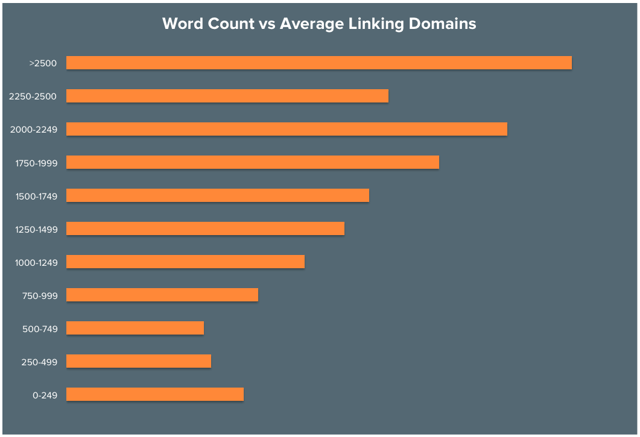Content is supposed to make people engage.
It’s used to build brand awareness and create loyal customers. But most of the time, it feels like it’s pretty useless. And it can be super frustrating.
But, here’s the thing. Have you been creating the right types of content? The kind that’s shareable, taggable, and linkable? Chances are, probably not.
Before you give up on your content marketing strategy, check out these 6 types that always make people engage (when done right!)
- High-quality infographics
- Social media posts that ask for help
- Timely opinion pieces over case studies
- Original white papers and data-driven research
- Videos and filmed podcasts
- Memes on social media
Content marketing checklist for SEO success
Google’s main goal is to satisfy search intent. It wants its users to find answers to their questions ASAP. If you want to boost your ranking on search engines for SEO (search engine optimization), content relevance is key.
You’ve got to know what your audience needs from each piece of content if your goal is to increase landing page traffic and conversions. High engagement shows you’ve nailed it.
The types of content marketing that’ll make your target audience want to engage have a few things in common. You want to make sure you’re ticking a few of these traits:
- Linkable
- Make people want to tag their friends
- Drives users to comment an opinion
- People want to share with their network
- Well-researched
- Includes unique data
- Plenty of high-quality visuals
- Evokes emotion
Outreach involves finding and contacting people who might be interested in your business. Inbound marketing pulls those people to your page with shareable content.
So, what type of content has the above traits?
1. High-quality infographics
On average, infographics get 3x more shares than any other type of social media content. No wonder they’re a digital marketing powerhouse.
People love visual content. And images can be especially helpful when you’re trying to retain information. One study found that 10-20% of written or spoken information was retained 3 days later compared to 65% of visual information.
Infographics work best when they have:
- Eye-catching designs
- Clear information
- Vibrant colors
- Bold titles and subtitles
- Relevant facts and stats
Like this one about the benefits of content curation:

If you’re arty, this is a form of content you’ll definitely want to try. If you’re not, it doesn’t matter. There are loads of different tools out there (like Canva) with templates that make creating them easy. So, you don’t have to be a trained graphic designer to pull it off.
Two of our most shared posts on Quuu have been infographics. Some of my top tips for success are:
- All colors and fonts should be on-brand
- Include your logo
- Source the webpage it came from
- Keep text sections short and sweet
- Take time to space things properly
Don’t rush something because you want to see results. Once you think it’s ready to be published, leave it overnight and check it again with fresh eyes. You’ll almost always spot something you didn’t see the day before!
2. Social media posts that ask for help
This type of content marketing seems super obvious. But that’s ‘cause it is. If you want people to engage, sometimes you’ve just got to ask. But not like, “Please, can I have some engagement?”

Source: GIPHY
I’m talking about questions that make people genuinely want to help out and answer.
Users on social media platforms love to spread their knowledge. People like to think they’re helping out where they can. But they can spot clickbait a mile off. So, the key here is to think of questions you could honestly use help answering.
You could ask:
- Close-ended questions – that have a simple “yes” or “no” answer
- Multiple choice – let your audience pick from a few
- Timely questions about trending topics or events
- Fill-in-the-blank questions
- Questions that define your brand – picking logos or designs
LinkedIn or Twitter are the perfect places to try this form of content marketing. But just a tip – we’d recommend avoiding questions that are too divisive. Say, politics or religion. Stay safe out there!
My favorite question always gets results, and it always benefits you. It only takes 3 steps:
- Say you’re looking to get more active on the platform
- Ask people to tag their favorite accounts they follow
- Use industry-specific hashtags

People will comment, tag, and share your question. It’s a total win-win. You’re introduced to people and other brands/small businesses that could help you. Your engagement spikes. And you’ll get on the radar of new audiences as a bonus.
It might be a slow burner but stick with it. Social media marketing doesn’t have to be complicated. These kinds of posts prove it.
3. Timely opinion pieces over case studies
These days, we’re told we’ve all got super short 8-second attention spans. Tell that to my 8-hour Netflix binges.
So, we can only concentrate for 8 seconds. But blog content is the most popular type of content marketing? Go figure! Especially long-form content. HubSpot found that articles with 2,500+ words earn the most links.

With this in mind, articles are some of the best content types you can make. But only if they’re done right. Because they’re most common, they’re everywhere. And most are nothing special.
But that’s where you’ll be different, right? Because as unique human beings, we all have our own experiences and thoughts. And we can use these to create some really interesting content.
Case studies are usually examples of how you’ve helped customers in some way or another. And they can be an awesome addition to your marketing campaigns. But they’re probably unlikely to spark a ton of engagement because they’re pretty promotional.
Having an opinion online is nothing new. Most people share their opinions on social media sites and through testimonials constantly. But some opinions have the power to skyrocket your engagement levels and start your journey to thought leadership. (With the right topic, that is!)
So, here are some rules for nailing your next (or first) opinion article:
- Choose a timely topic (or get in there early!)
- Create an eye-catching title
- Show your authority on the subject
- Add unknown facts and a unique viewpoint
- Keep it short and sweet
- Be aware of your audience and their views

If you want some inspiration, here are 3 examples from Medium with high reader numbers and engagement:
- “Don’t Listen to Those Productivity Gurus: Why Waking Up at 6 A.M. Won’t Make You Successful”
- “Why You Shouldn’t Share Your Goals”
- “The Power of Doing Nothing at All”
Find a topic that’s trending. Choose a captivating title. And create some great content.
4. Original white papers and data-driven research
The following content marketing formats take a lot of work to put together. Which can be difficult if you’re a solo blogger and don’t have a dedicated marketing team. But data-driven quality content always delivers a ton of backlinks.
Showing your expertise will help to build trust with potential customers. Content creation that’s full of valuable information can enhance your customer journey. Especially when people are in the research/learning phase.
Many people use ebooks and white papers as a lead generation tactic. Usually, by asking for a name and email. Content Marketing Institute is a prime example of this. They have tons of downloadable reports and papers on their site.

Source: CMI
Data-driven content is full of proof and backing for all claims with stats and facts. So, people know they can trust it. I search for data-filled content on the daily to enhance blog posts and infographics.
One of the easiest data-driven types of content you can create is a list of statistics. People love to use these to demonstrate points in their articles.
You don’t even need your own database to do it because you’re curating from lots of different sources. And, obviously, you’ll credit each one you use.

Source: Ahrefs
Creating a report or white paper will take a lot longer. But the more you put in, the more you’re likely to get out.
5. Video content and filmed podcasts
Interactive content requires people to actively engage with it. But this doesn’t just include quizzes or apps. Video and filmed podcasts are considered “interactive” too!
86% of businesses now use video marketing. It’s a huge part of most people’s marketing efforts. And if it’s not in your content strategy yet, you’re probably thinking about it.

Source: HubSpot
Even on visual platforms like Instagram, video gets more engagement than any other content type. And there are tons of different types of video content you can create:
- Webinars
- Interviews with industry experts
- Funny gifs
- Product demos
- Social videos (e.g. Snapchat or TikTok)
- Behind the scenes of your company
Podcasts also drive high levels of engagement. They’re easy to consume because most are just like listening to a conversation. And we take part in and listen to conversations every day!
If you’re successful, they’re a sure-fire way to build a loyal audience. And demand for them is only increasing. Podcast listeners increased by 29.5% from 2018 to 2021.
By filming your podcast content, it lets your listeners put a face to the voice they know and love. It also gives your audience another way to interact with it.
If you’re new to video marketing, why not start with something easy like social videos? Try a quick Story on Instagram or create a 10-second soundbite for Twitter. Facebook Live videos can result in up to 6x more interactions than posted videos because viewers start engaging with each other too!
6. Memes on social media
Memes came out of nowhere. And as far as different types of content marketing go, they’re pretty out there. Basically, they’re images or videos with text on top. Mostly about pop culture. They’re usually funny, and the best go viral.
I am always commenting and tagging my friends in relevant memes. And vice versa. A tag is your buddy saying, “this is so you” or “you’ll find this funny”. However insulting it may be.
Memes are shareable by nature. Well, they’re meant to be. So in terms of increasing engagement, they’re a no-brainer.

Memes help you relate to your audience. They can bring a feeling of community because you’re all in on the same joke. And we all want to be entertained on social media.
There are tons of classics you’ll see over and over. “Woman yelling at cat” above is a prime example.
So, how do we replicate their success and prompt comments, tags, and shares? Make sure your meme game follows these 5 basic rules:
- Don’t be offensive (there’s a fine line!)
- Write in your brand voice
- Everyone loves the classics (think ‘Distracted Boyfriend’ and ‘Success Kid’)
- Create original ones specific to your niche
- Jump on trending topics

If you’d like to try creating your own, check out tools like imgflip or Kapwing. Now, get out there and entertain!
Conclusion
Your content marketing strategy should ime with nvolve lots of different types of content. But we’re always chasing brand awareness, so you need your target audience to engage with it too.
These 6 types of content marketing should never let you down:
- High-quality infographics
- Social posts that ask for help
- Timely opinion pieces
- Data-driven research
- Video content
- Memes
Try them all and see which works best for you and your audience.
What’s your favorite type of content marketing that gets high engagement? Are there any you think we’ve missed? Let us know below!





